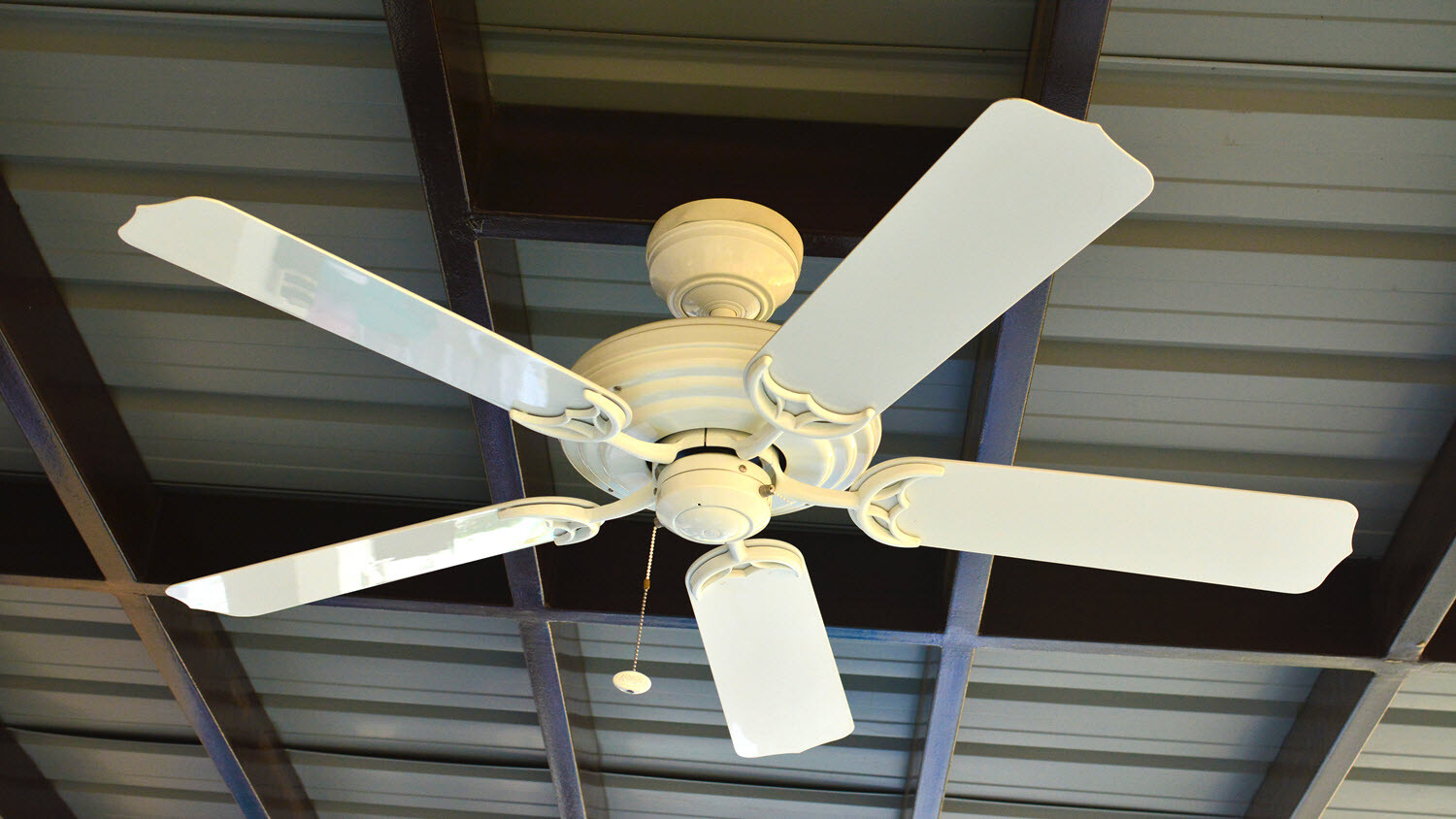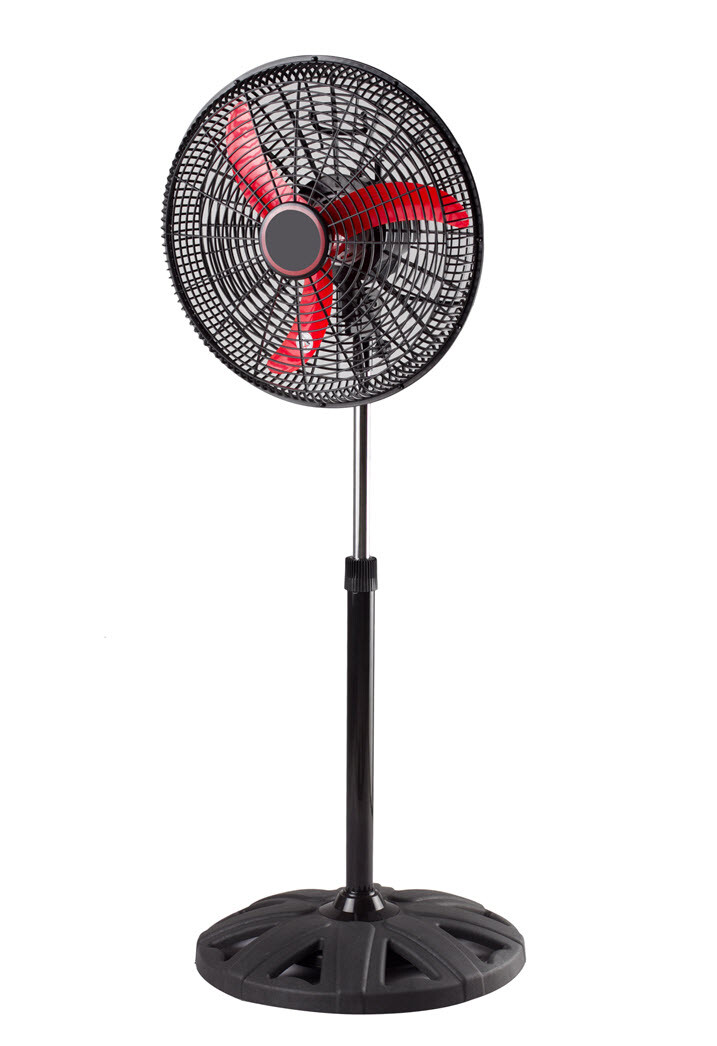Home cooling and solar PV are inextricably linked in two ways:
- Time of day: our need for cooling is strongest when temperatures peak during the daytime – the time when solar electricity production is also at its strongest.
- Time of year: summer is the time of year when our solar panels produce the most electricity. It’s also the time when we need the most cooling.
Therefore your cooling needs, and the technology you choose to meet those needs, will play a big role in determining what size solar PV system you need, and how profitable solar will be for you.
There are 4 main things you need to consider when working out how to cater for your cooling needs in your solar setup.
Get a free, instant solar & battery quote comparison
Compare Solar & Battery Quotes
1. What cooling appliances do you use?
There are 3 main forms of cooling technology available to homes in Australia:
- Fans
- Evaporative Cooling
- Air Conditioning
 Fans and evaporative cooling use far less electricity than air conditioning. This has implications for how much of your solar electricity will actually get used for cooling.
Fans and evaporative cooling use far less electricity than air conditioning. This has implications for how much of your solar electricity will actually get used for cooling.
Let’s say you’ve got to cool an entire house with 4 people for 1 hour. The table below shows roughly how much electricity you’ll use in the hour, and what percentage of your estimated hourly solar electricity production that represents. We’ve included figures for 3kW and 5kW systems in Sydney for comparison.
| Estimated hourly power use | % of hourly solar output used (3KW) | % of hourly solar output used (5KW) | |
| 6 ceiling fans | 0.45 kW | 26% | 16% |
| Ducted evaporative cooling | 1.02 kW | 60% | 36% |
| Ducted air conditioning | 3.89 kW | 100%* | 100%* |
Figures based on cooling an area of 100 sqm, with 6 areas to be cooled. Calculations assume 125kw of cooling per sqm. *3.89KW is actually 226% of the estimated hourly solar power production from a 3kW system in Sydney, and 136% of a 5kW system. Solar output based on figures from the Clean Energy Council.
 As you can see above, even a large solar system cannot supply all the power that a ducted air conditioning system needs. However, you will be utilising all your solar power while it’s running, so it makes sense to account for air conditioning when sizing your solar PV system and when calculating how much of your solar electricity you’ll use versus how much you’ll send back to the grid.
As you can see above, even a large solar system cannot supply all the power that a ducted air conditioning system needs. However, you will be utilising all your solar power while it’s running, so it makes sense to account for air conditioning when sizing your solar PV system and when calculating how much of your solar electricity you’ll use versus how much you’ll send back to the grid.
On the other hand, fans and evaporative cooling leave you with quite a bit of surplus solar electricity. We’d recommend either leaving them out of your sizing and solar utilisation calculations, or adding them to any other major uses of electricity in your home, such as hot water or cooking.
2. When do you need cooling?
If you use air conditioning, the next step is to work out the average number of daylight hours you’d run it for each day over the warm months. This will help you understand how much of your overall summer solar output you’ll end up using for air conditioning.
Unless you have battery storage, solar electricity gets sent to the grid if you don’t use it immediately, so you can’t use it for cooling in the evenings.
To work out the average number of daylight hours you use cooling, you’ll need to consider questions such as:
- Do we run cooling during the day on weekdays, or is everyone out of the house?
- Do we go out of town during summer holidays?
- How long do we run our system during the day when we’re at home?
The table below shows you how many hours of sunlight per day, each capital city gets during the “summer” months (when average temperatures are above 25 degrees Celsius). Compare this to the average number of hours you run your air conditioner each day in summer, and you’ll get an idea of how many hours of solar electricity you’ll either send back to the grid, or need to utilise on other activities.
| City | Average Sunlight per Summer Day^ (in hours) |
| Adelaide | 9.6 |
| Brisbane | 7.5 |
| Canberra | 8.8 |
| Darwin | 8.5 |
| Hobart | N/A+ |
| Melbourne | 8.6 |
| Perth | 10.0 |
| Sydney | 7.1 |
Source: Bureau of Meteorology, Monthly Climate Statistics, May 2017. +Hobart’s average temperature never exceeds 25 degrees Celsius, so cooling requirements are negligible.
3. Do you use an air conditioner for daytime heating?
If the answer is yes, then it makes sense to upsize your solar PV system, as you’ll be getting good utilisation from your solar panels during the day in both summer and winter.
4. Don’t plan for extremes
“How hot does it get in summer?” is not the question you should be asking. Rather, ask yourself “How many days (or months) a year do I need to cool my house?”
For example, Broken Hill’s highest average temperature is 33 degrees, compared to 29 degrees in Brisbane. However, Brisbane has 7 months of average temperatures above 26 degrees, compared to just 5 months in Broken Hill (source: Bureau of Meteorology).
A ducted air conditioner in Broken Hill will likely run harder than one in Brisbane, but ultimately both will end up using all your solar power, regardless of how big your system is. However the air conditioner in Brisbane will run for more hours in total, and will give you better solar power utilisation. Therefore it would make more sense to upsize a solar PV system in Brisbane than in Broken Hill on the basis of your cooling needs.
Reviewing Your Cooling System
Using solar electricity to make your air conditioner “greener” is a last resort. Reviewing your home cooling setup to reduce your energy consumption is far cheaper, and could allow you to cover your electricity needs with a smaller size solar PV system.
Compare solar & battery storage quotes from providers in your area
Compare Solar & Battery Quotes
© 2017 Solar Choice Pty Ltd
- How home heating affects your solar PV setup - 26 July, 2017
- How home cooling affects your solar PV setup - 11 May, 2017
- How your hot water system affects your solar PV setup - 15 March, 2017
For poorly built and oriented homes, the demand is when the external temp is hot, and with buildings with high thermal mass walls and floor, the there is a thermal lag- between external high temp and internal high temps.
For energy efficient homes, the lag may be for many hours, and won’t be anywhere near as high as for homes designed and built using passive solar design principles.
In the table above the units should be kWh, (not kW)
With a moderate sized home, of passive design, and trees or other shading to the E & ESE and W & WSW, along with energy efficient air con (ie with a COP in excess of 4 – They go up to 6) now, a PV system could typically be able to easily cover the demand on most days.
With some flexibility in the expectations of the occupants, and ceiling or pedestal fans running, as long as the internal temp is lower than say 28, then comfort is generally acceptable. ie some air con is better than none, and the bigger the PV system the better.
– because the Feed In Tariffs are likely to near double in most areas soon, and thinking a few years ahead, many people with will be charging their electric cars from home off the solar PV and possibly battery system.
Hi Ian,
Thanks for your comments. You make some very valid points around issues such as thermal lag and steps that households can take to improve the thermal effectiveness of their homes such as shading, insulation and air conditioner temperature settings.
Given that no two homes will be the same in this regard, the article deliberately avoids any mention of specific scenarios that may alter cooling demand, and instead assumes an air conditioner running under test conditions for one hour.
This article also focuses on cooling in isolation to other electricity needs when doing solar PV calculations. Your mention of other electricity needs such as charging electric cars is nevertheless a very important consideration when sizing solar PV systems.
I’ve also included a couple of clarifications on some of the technical points you raised:
– KWh vs KW: the column in which the figures appear is titled “Estimated hourly power use”, so the “hourly” dimension of kWh is already accounted for in the column heading.
– COP of Air Conditioning Systems: for cooling purposes the EER figure is taken as the measure of efficiency, with the COP used for heating. EERs of 4-6 are indeed common for individual split systems, however not for ducted air conditioning, where they drop below 4 due to cooling losses as air passes through the ducts. The article focuses on ducted air conditioning as it is the most likely whole-of-house cooling solution to be adopted by a family of four.
Cheers
Aravind